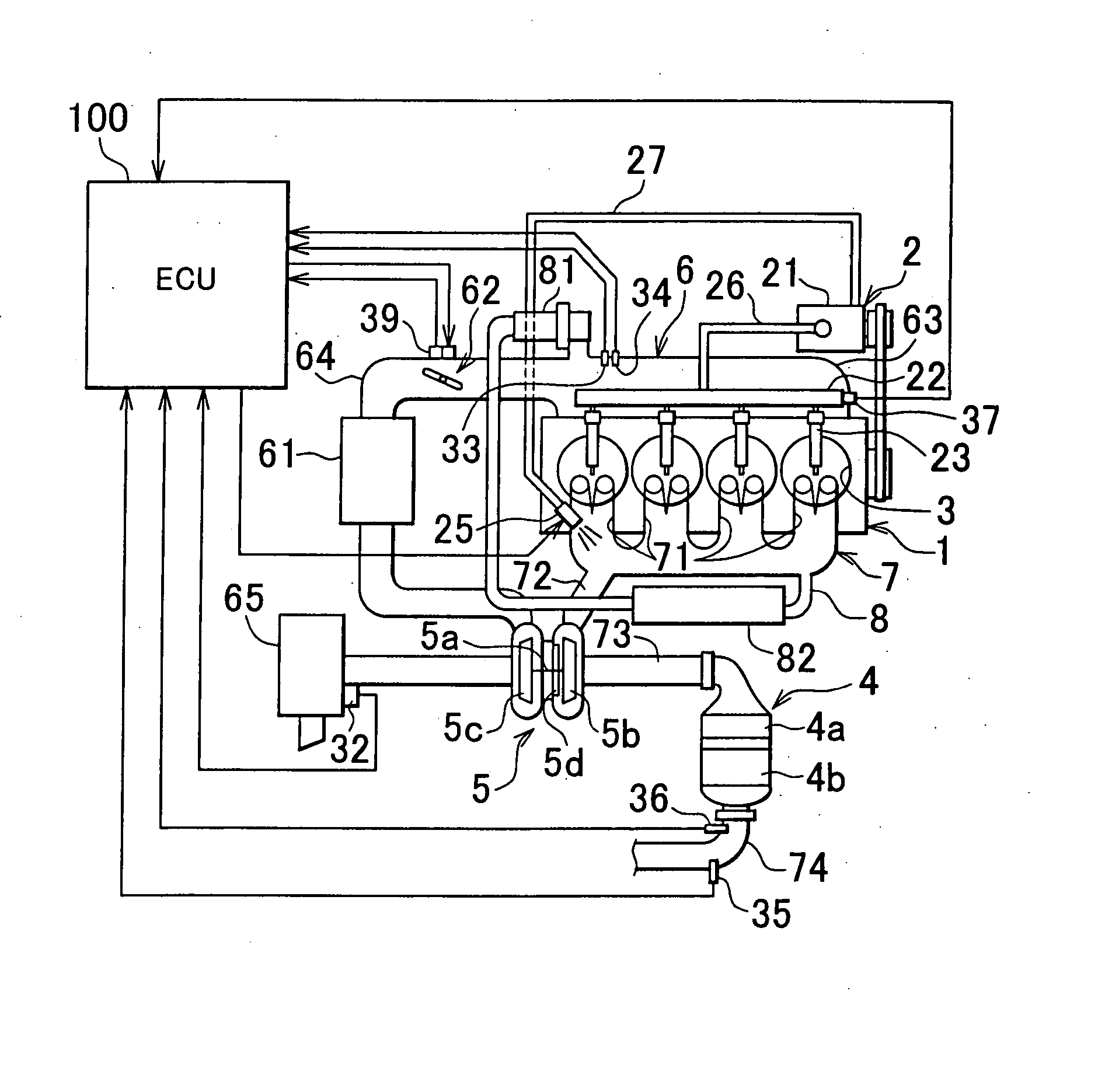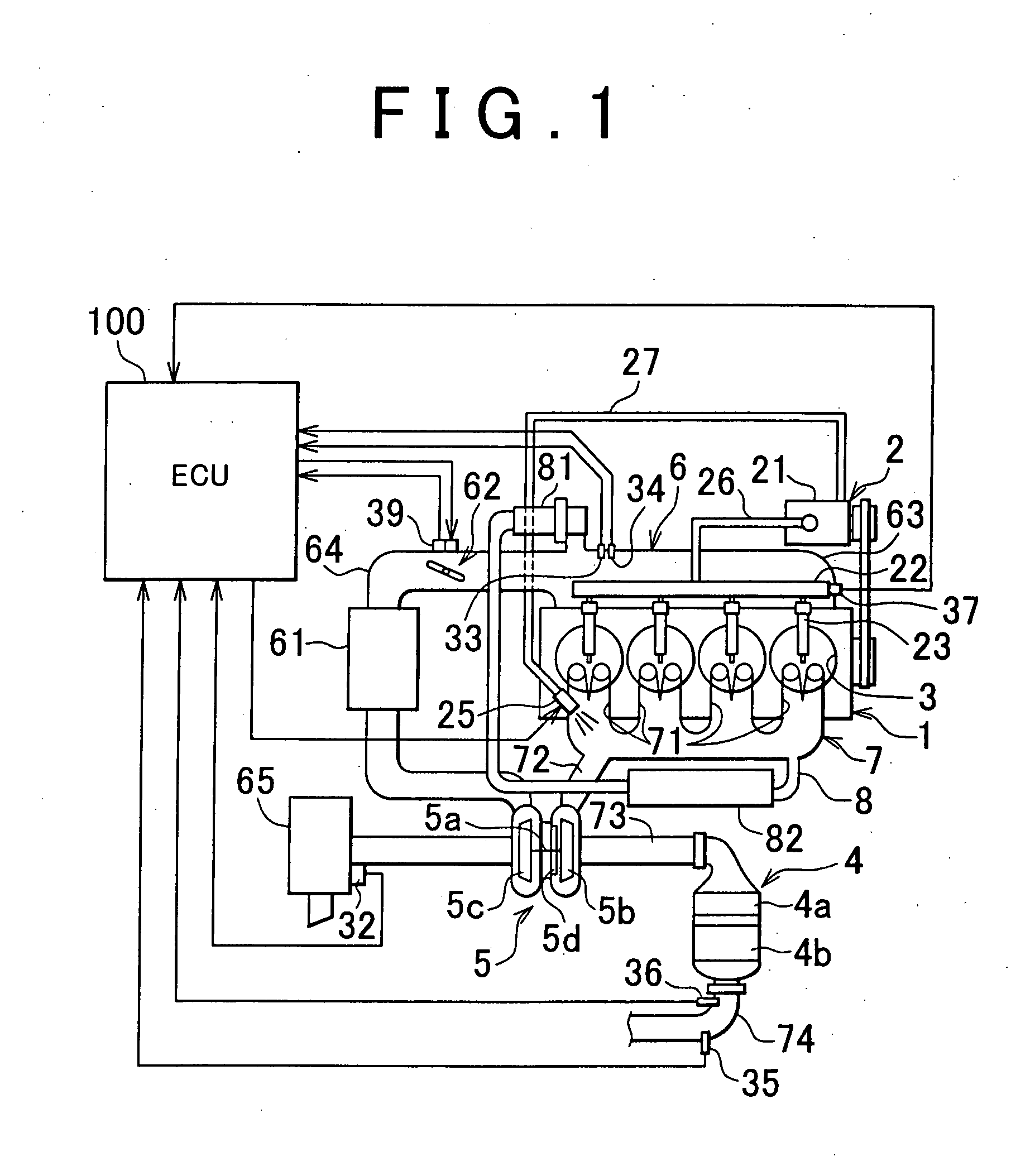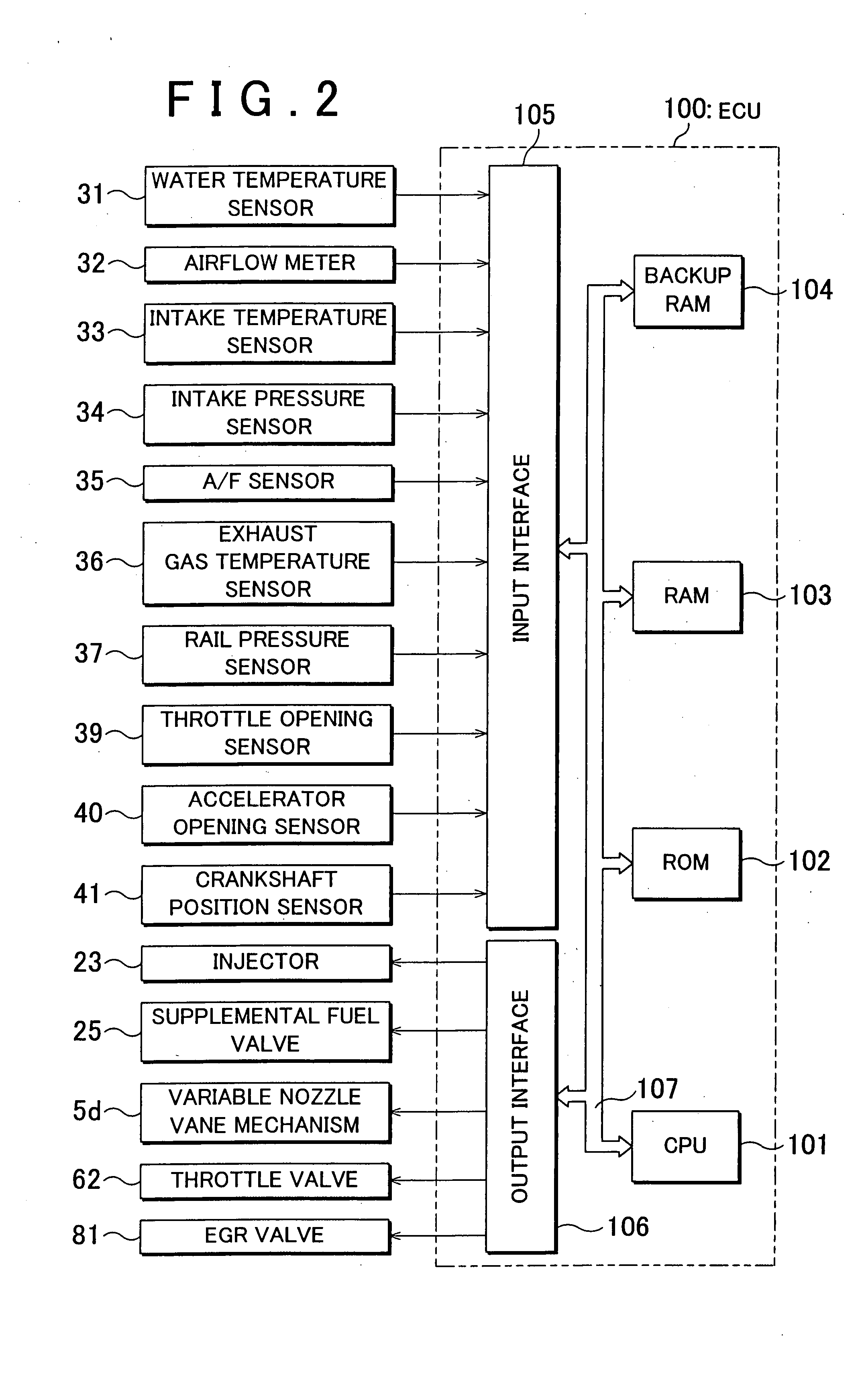Exhaust gas purification system for internal combustion engine and method for exhaust gas purification
a technology internal combustion engine, which is applied in the direction of machines/engines, mechanical equipment, electric control, etc., can solve the problems of excessive abrupt increase in catalyst bed temperature, and disadvantages of exhaust gas purification system, so as to maintain fuel economy
- Summary
- Abstract
- Description
- Claims
- Application Information
AI Technical Summary
Benefits of technology
Problems solved by technology
Method used
Image
Examples
Embodiment Construction
[0029] One embodiment of the invention will be described below with reference to the drawings. A general configuration of a diesel engine using a supplemental fuel supply apparatus of the invention is described with reference to FIG. 1.
[0030] In this embodiment, the diesel engine 1 (hereinafter referred to as “engine 1”) is a common rail direct-injection four-cylinder engine. The engine 1 includes, as main components, a fuel supply system 2, combustion chambers 3, an intake system 6 and an exhaust system 7.
[0031] The fuel supply system 2 includes a fuel supply pump 21, a common rail 22, injectors (fuel injection valves) 23, a supplemental fuel valve 25, an engine fuel passage 26 and a supplemental fuel passage 27.
[0032] The fuel supply pump 21 draws fuel from the fuel tank and pressurizes the fuel to supply the high-pressure fuel to the common rail 22 through the engine fuel passage 26. The common rail 22 functions as an accumulator to maintain the pressure of fuel supplied from ...
PUM
 Login to View More
Login to View More Abstract
Description
Claims
Application Information
 Login to View More
Login to View More - R&D
- Intellectual Property
- Life Sciences
- Materials
- Tech Scout
- Unparalleled Data Quality
- Higher Quality Content
- 60% Fewer Hallucinations
Browse by: Latest US Patents, China's latest patents, Technical Efficacy Thesaurus, Application Domain, Technology Topic, Popular Technical Reports.
© 2025 PatSnap. All rights reserved.Legal|Privacy policy|Modern Slavery Act Transparency Statement|Sitemap|About US| Contact US: help@patsnap.com



